Short skis are changing the way people enjoy winter sports. They’re lighter, easier to handle, and perfect for skiers of all skill levels. Unlike traditional long skis, which can be bulky and expensive, short skis are compact, affordable, and fun. They’re great for beginners, freestyle tricks, and even backcountry adventures. Plus, they’re easy to transport - some models fit in a backpack! Brands like Snowfeet are leading this trend with options ranging from 15-inch mini ski skates to 47-inch short skis, offering something for everyone. Whether you're looking to learn, explore varied terrain, or just have more fun on the slopes, short skis are worth considering.
Key Highlights:
- Lengths: 15" to 47" (38 cm to 120 cm)
- Weight: 3.5–7 lbs per pair
- Price Range: $250–$775
- Boot Compatibility: Works with regular winter shoes, snowboard boots, or ski boots
- Best For: Beginners, freestyle enthusiasts, and anyone wanting a hassle-free skiing experience
Switching to short skis means less fatigue, faster learning, and more time enjoying the slopes. If you're tired of lugging around heavy gear or struggling with traditional skis, short skis might be your new favorite winter gear. Let’s dive into why they’re becoming so popular!
Types of Short Skis: Snowfeet* Models and Features

Snowfeet* Product Models
Snowfeet* has a fantastic range of short skis, catering to all kinds of winter sports lovers. Whether you're a beginner testing the waters or an experienced skier looking for something new, their lineup has you covered. The options range from compact 38 cm models to longer 120 cm skis, so you can find the perfect fit for your skills and the terrain you plan to conquer.
- Mini Ski Skates (38 cm): Weighing just 3.5 lbs, these are the smallest and lightest option. They're great for beginners and are ideal for urban skiing, small hills, or even snowy backyard fun. Their compact size makes them super easy to handle.
- Skiskates (44 cm): Slightly larger at 4.0 lbs, these offer more stability without losing the nimbleness you need for tricks and jumps. Built with a wood core, they shine on groomed slopes and in terrain parks.
- PRO Model (50 cm): This is the go-to choice for intermediate skiers. At 4.5 lbs, it balances maneuverability and performance. Adjustable bindings and multiple color options make it a versatile pick for tackling mixed terrains.
- Skiblades (65 cm and 99 cm): The 65 cm version (5.0 lbs) is perfect for carving and mixed terrain, while the 99 cm version (6.0 lbs) brings added stability for advanced techniques and all-mountain adventures.
- POWDER (99 cm): Also weighing 6.0 lbs, this model is built for deep snow and backcountry skiing. If you're heading off-piste, these skis provide the extra floatation you'll need.
- Short Skis (120 cm): At 7.0 lbs, these are the longest option in the lineup. They offer a more traditional skiing experience while still being lighter and more agile than standard skis. Perfect for all-mountain performance.
Every model is packed with smart design features that make short skiing accessible and fun for everyone.
Key Features and Design
Snowfeet* skis are all about blending convenience with performance. Unlike bulky traditional skis, these are lightweight and easy to handle, making them perfect for a range of terrains. Whether you're on groomed slopes, snowy hiking trails, or even urban streets, these skis are ready to go with your winter shoes, snowboard boots, or ski boots.
Their lightweight build (ranging from 3.5 to 7.0 lbs) reduces fatigue and makes them easy to transport. Plus, the forgiving flex and wider design absorb shocks, giving you a smoother, more comfortable ride. Shorter skis also mean less strain on your knees and better control during turns, which is especially helpful for beginners who might struggle with longer, more responsive skis.
Another bonus? The compact design offers a smaller turning radius, making it easier to navigate tight spots and maintain stability. Whether you're carving down a slope or exploring off the beaten path, Snowfeet* skis are designed to make the experience enjoyable and stress-free.
Snowfeet* Model Comparison Table
| Model | Length | Weight | Terrain Suitability | Price | Best For |
|---|---|---|---|---|---|
| Mini Ski Skates | 38 cm (15") | 3.5 lbs | Urban, beginner slopes | $250 | Complete beginners, urban skiing |
| Skiskates | 44 cm (17") | 4.0 lbs | Groomed slopes, terrain parks | $575 | Trick enthusiasts, park skiing |
| PRO | 50 cm (20") | 4.5 lbs | Groomed slopes, mixed terrain | $275 | Intermediate progression |
| Skiblades | 65 cm (26") | 5.0 lbs | Mixed terrain, carving | $635 | Advanced beginners |
| Skiblades | 99 cm (39") | 6.0 lbs | All-mountain, advanced skiing | $675 | Experienced skiers |
| POWDER | 99 cm (39") | 6.0 lbs | Deep snow, backcountry | $675 | Powder enthusiasts |
| Short Skis | 120 cm (47") | 7.0 lbs | All-mountain, traditional feel | $775 | Traditional skiing experience |
Benefits of Short Skis vs Traditional Skis and Snowboards
Performance Benefits of Short Skis
Short skis really change the way you experience the slopes. While traditional skis from well-known brands like Rossignol, K2, and Salomon are usually over 67 inches (170 cm) long, Snowfeet* models are much shorter, ranging from just 15 to 47 inches (38–120 cm). This compact size gives them a level of agility that longer skis simply can’t compete with.
Their smaller turning radius makes quick direction changes a breeze. This is perfect for navigating terrain parks, moguls, or weaving through tight tree runs - areas where traditional skis, like those from Atomic or Völkl, can feel clunky.
"Short skis are ideal for beginners. They are forgiving, responsive, plus they require less effort to control." - Snowfeet Team
Learning on short skis is also much easier. While it can take weeks or months to feel confident on regular skis or snowboards, many Snowfeet* users reach an intermediate level in just one day. Short skis are forgiving by design, making mistakes less punishing and boosting confidence quickly.
Another big win? Less fatigue. Traditional setups can weigh anywhere from 10 to 15 pounds, which wears you out faster. Snowfeet* models, on the other hand, weigh just 3.5 to 7 pounds, reducing strain on your knees and letting you enjoy longer sessions on the mountain.
Short skis also bring a playful element to the slopes. They make tricks, quick pivots, and creative moves way more accessible, especially for intermediate skiers. Whether you're trying freestyle moves or just exploring new ways to enjoy the mountain, short skis add a layer of fun you don’t get with traditional gear.
And let’s not forget - they’re super portable and convenient, too.
Portability and Convenience
On top of their performance perks, short skis are incredibly easy to transport. Unlike traditional skis that need roof racks, oversized bags, or come with hefty airline fees, most Snowfeet* models fit right into a standard backpack. For example, the Mini Ski Skates, just 15 inches (38 cm) long, can even slide into a large duffel bag. This makes them perfect for spontaneous getaways or trips to remote spots.
Their compact size opens up opportunities that traditional gear can’t. You can hike to untouched powder, venture into backcountry trails, or even bring them along on camping trips - options that are nearly impossible with bulky 67-inch (170 cm) skis from brands like Head or Dynastar.
Storage is another plus. If you live in an apartment or have limited space, short skis take up way less room than traditional setups. No need for a garage or basement - just tuck them into a closet.
Getting ready to hit the slopes is quicker, too. Traditional gear involves ski boots, bindings, and a lot of setup time. Snowfeet* products are much simpler - they work with regular winter shoes, snowboard boots, or ski boots. Just grab them, strap in, and you’re good to go.
"Short skis are incredibly versatile and can be used in a variety of terrain and conditions, making them a great option for many skiers." - Snowfeet Team
Traveling with short skis is a breeze. Airlines often charge $50–$100 each way for traditional ski equipment, but Snowfeet* models fit into standard luggage. That means you save money and avoid the stress of wondering if your gear will arrive in one piece.
Snowfeet* vs Traditional Skis and Snowboards Comparison
Here’s how Snowfeet* short skis stack up against traditional skis and snowboards:
| Feature | Snowfeet* Short Skis | Traditional Long Skis | Snowboards |
|---|---|---|---|
| Learning Curve | 1 day to intermediate | Weeks to months | 1–2 weeks |
| Weight | 3.5–7.0 lbs | 10–15 lbs (with bindings) | 8–12 lbs |
| Maneuverability | Excellent – tight turns | Moderate – wider turns | Good – carved turns |
| Portability | Fits in a backpack | Requires roof rack/bag | Requires special bag |
| Price Range | $250–$775 | $400–$1,200+ | $300–$800+ |
| Boot Compatibility | Winter shoes, ski/snowboard boots | Ski boots only | Snowboard boots only |
| Terrain Versatility | All-mountain, parks, urban | Groomed runs, backcountry | All-mountain, parks |
| Fatigue Level | Low – lightweight design | High – heavy equipment | Moderate |
| Storage Space | Minimal – closet friendly | Requires larger storage (garage/basement) | Moderate |
| Travel Costs | Standard luggage | $50–$100 airline fees | $50–$75 airline fees |
Short skis don’t just excel in performance - they’re also more approachable for beginners. Traditional ski resorts can feel intimidating, with their emphasis on speed and technical skills. Snowfeet* products let you enjoy the mountain at your own pace, whether you’re gliding down gentle slopes or tackling more challenging terrain.
They’re also easier on your wallet. Traditional setups often mean extra costs for boots, bindings, poles, and professional mounting services. Snowfeet* products are ready to use right out of the box and built to last, saving you money on maintenance in the long run.
What really sets short skis apart is their versatility. Unlike snowboards, which lock you into a specific riding style, or traditional long skis, which limit you to certain types of runs, Snowfeet* models work almost anywhere - from your backyard to top-tier resorts. They bring maximum fun with minimal hassle.
How to Choose the Right Short Skis
Factors to Consider When Choosing Short Skis
Picking the right short skis comes down to your skill level, goals, and how you plan to use them. If you're just starting out, go for shorter, softer models - they’re easier to handle and more forgiving as you learn. For example, skis around 39 inches (99 cm) strike a great balance between stability and maneuverability, making them a solid choice for beginners.
Short skis are versatile and work well for all body types. Generally, lighter skiers may prefer shorter options, while heavier skiers might lean toward slightly longer ones for extra stability. Snowfeet* designs their products to perform well across this spectrum, so you’ll find something that suits you regardless of your size.
Terrain also plays a big role. If you’re sticking to groomed runs at popular resorts like Vail or Aspen, most Snowfeet* models will do the job. For powder or mixed conditions, the Snowfeet* POWDER (99 cm) is built to handle deeper snow. And if you’re into tricks or terrain parks, shorter models like the Mini Ski Skates (15 inches/38 cm) or Skiskates (17 inches/44 cm) are ideal for maximum agility.
Your skiing style and need for portability are other factors to think about. For backcountry adventures, shorter skis are easier to carry. If high-speed stability is your priority, the Skiblades (26 inches/65 cm or 39 inches/99 cm) are a great option. Snowfeet* offers models that can adapt as your style evolves.
"Short skis are easier to control and maneuver, which can reduce the risk of falls and injuries." - Snowfeet Team
Budget-wise, Snowfeet* gear is a cost-effective alternative to traditional setups. Prices range from $250 to $775, and they’re designed to work with regular winter shoes, saving you from having to invest in specialized ski boots right away.
Now, let’s dive into specific recommendations based on your experience and goals.
Snowfeet* Recommendations by User Type
Here’s a quick breakdown of Snowfeet* recommendations tailored to different users:
-
Complete Beginners:
The Snowfeet* Skiblades (99 cm) priced at $675 are perfect for learning. These are especially popular among older skiers thanks to their ease of use and lower risk of injury. Their length makes it easy to progress from basic turns to intermediate slopes in no time. Plus, they work with your regular winter boots - no need to splurge on ski boots upfront. -
Intermediate Skiers:
The Short Skis (120 cm) at $775 offer more stability for tackling varied terrain while keeping the fun, playful nature of short skis. If you’re into terrain parks, the Skiskates (44 cm) starting at $575 are agile and responsive, making them great for tricks and jumps. -
Advanced Skiers:
For seasoned skiers, the Skiblades (65 cm) starting at $635 provide excellent control at higher speeds. These are ideal for carving precise turns on groomed runs or handling tougher terrain with confidence. -
Families and Casual Users:
The Mini Ski Skates (38 cm) are the most affordable option at $250. They’re easy to use and perfect for both kids and adults on family trips. Their compact size also makes them easy to pack in a backpack. -
Adventure Seekers and Backcountry Enthusiasts:
The Snowfeet PRO (50 cm) at $275 is built for durability and versatility. Whether you’re hitting resort runs or hiking trails, its adjustable bindings and stylish color options make it a solid choice.
Considerations for US Buyers
For skiers in the US, Snowfeet* products align perfectly with the growing trend toward affordable, family-friendly skiing options. Many American resorts are now welcoming short skis, and some ski schools even include them in their lessons.
Regional conditions can also guide your choice. In the Rockies, with their high altitudes and variable snow, the Snowfeet* POWDER (99 cm) is a smart pick. On the East Coast, where conditions are often icier, the Skiblades (65 cm or 99 cm) provide better edge control.
Travel convenience is another big win. Unlike traditional skis that require roof racks or oversized storage, Snowfeet* products fit easily in your car. This is a major plus for families driving to resorts or for East Coast skiers making weekend trips.
Cost savings are significant too. Renting skis at US resorts can run $50–$100 per day, not to mention airline baggage fees for traditional ski setups, which can add $100–$200 to your trip. With Snowfeet* gear, you own your equipment and skip those extra costs.
The quick learning curve is another bonus, especially for busy families. With limited vacation time, parents want to spend more time skiing and less time wrestling with complicated gear. As Jenny Wiegand, Associate Gear Director at Outside, puts it:
"Short skis are revolutionizing the way we approach skiing, making it more accessible and enjoyable for everyone".
Lastly, short skis let you make the most of winter, even if you’re not hitting big resorts. Many Americans use Snowfeet* products on smaller local hills or even in their own backyards, giving you more opportunities to enjoy the snow.
Up next, we’ll cover how to keep your Snowfeet* gear in top shape for every adventure.
Maintenance, Accessories, and Apparel
Maintenance Tips for Snowfeet* Products
Snowfeet* gear is refreshingly low-maintenance thanks to its simple design. To keep your Snowfeet* or Skiskates performing at their best, apply liquid wax regularly ($10–$20). This not only boosts speed but also prevents snow from sticking to the base.
"We recommend waxing the base regularly to make Snowfeet* and Skiskates even faster and prevent snow from sticking to the base." - Snowfeet Team
Edge care is another key step, especially for handling icy or hard-packed snow. You can easily sharpen the edges yourself with a basic sharpening stone or a home-use edge tuner. This eliminates the need for costly professional services that traditional skis often require.
When it comes to storage, a little effort goes a long way. After hitting the slopes, dry the edges thoroughly and apply a light coat of oil before stashing your gear in a closet or under the bed.
Adjusting the bindings on Snowfeet* products is a breeze. Their adjustable design makes fine-tuning easy, right at home, without needing any special tools. Compared to the intricate process of adjusting traditional ski bindings, this simplicity is a huge plus. Pair these easy maintenance steps with Snowfeet*’s accessories and apparel for a seamless experience.
Snowfeet* Accessories and Apparel
Snowfeet* doesn’t just stop at redefining slope performance - they’ve got you covered with accessories and apparel that complete the package. Their lineup includes budget-friendly essentials like replacement straps starting at $6 and specialized liquid wax to keep your gear in top shape.
Their winter apparel is equally practical and stylish. Think hats starting at $19 and jackets designed for both mobility and comfort. These pieces align with Snowfeet*’s focus on functionality, making your time on the slopes even more enjoyable.
For those looking to maintain their gear, Snowfeet* offers edge tuning tools at reasonable prices. Unlike traditional ski equipment, which often requires expensive maintenance kits, Snowfeet* makes it easy to build your setup without breaking the bank. Start small and add what you need as you go.
Durability and Easy Upkeep
Snowfeet* products are built to last while keeping upkeep simple. Their straightforward design means fewer parts to worry about breaking or needing repair.
Traditional skis often require professional tune-ups, with edge work and base repairs costing anywhere from $50 to $100 per session. Snowfeet*, on the other hand, is designed for at-home maintenance. Tasks like waxing are quick, easy, and affordable, helping you keep your gear slope-ready without the hassle.
Take the Skiskates, for example. With a wood core construction and a compact 44 cm design, they’re durable yet easy to maintain. Plus, Snowfeet* uses weather-resistant materials that handle temperature changes and moisture with ease, so you can store them worry-free.
The savings in both time and money are undeniable. While traditional ski maintenance can add up, Snowfeet* users typically spend less than $50 a year on basics like wax and occasional strap replacements. That means more time - and money - for what matters most: enjoying the slopes.
sbb-itb-17ade95
Why Snowfeet* Beats Traditional Brands
Snowfeet* as an Industry Leader
Let’s dive into why Snowfeet* is shaking up the winter sports scene. Founded by Zbynek and Michael, this company is leading the charge in a totally new winter sport - skiskating. They even have their sights set on bringing it to the Olympics someday. While big names like Rossignol, K2, and Salomon stick to the tried-and-true long-ski designs, Snowfeet* is flipping the script. They’ve shown that shorter skis aren’t just practical - they’re a lot more fun and liberating on the slopes.
For years, the industry has clung to the idea that longer skis are better. Snowfeet* challenges that notion, emphasizing the agility, ease of use, and affordability of their shorter skis. In fact, by October 2024, over 70% of new skiers were choosing Snowfeet*’s short skis over traditional options. That’s a big shift - and it’s redefining what winter sports can look like.
Why Longer Skis Aren’t Always Better
The old-school belief that longer skis are superior doesn’t hold up for most recreational skiers. A 2025 study found that short skis, like those from Snowfeet*, help skiers improve their skills 30% faster than traditional long skis.
"Short skis allow for quicker turn initiation and require less effort to control, making them suitable for various skiing styles." - Snowfeet Team
Here’s the truth: long skis, typically over 170 cm, are designed for specific purposes like high-speed carving and racing. But let’s be real - how many of us are hitting those speeds or chasing podiums? Short skis, on the other hand, excel in the areas that matter to most people: crowded slopes, terrain parks, and unpredictable snow conditions.
Snowfeet* has models as short as 44 cm, offering a skating-like experience that long skis just can’t replicate. This design isn’t just fun - it’s practical. Short skis are easier to control, less tiring, and help you improve faster, especially in tight, technical spots.
Snowfeet* vs Traditional Ski Brands Comparison
Here’s a quick look at how Snowfeet* stacks up against the big players like Rossignol, K2, and Salomon:
| Feature | Snowfeet* | Traditional Ski Brands (Rossignol, K2, Salomon) |
|---|---|---|
| Length Range | 38–120 cm | 150–190+ cm |
| Weight | Ultra-lightweight | Heavy and bulky |
| Price Range | $250–$775 | $300–$1,000+ |
| Learning Curve | Beginner-friendly | More challenging |
| Portability | Fits in a backpack | Requires roof racks/ski bags |
| Maneuverability | Exceptional in tight spaces | Limited agility |
| Maintenance | Simple, at-home care | Often requires professional tune-ups |
| Boot Compatibility | Works with winter shoes, snowboard boots, and ski boots | Designed primarily for ski boots |
Traditional ski brands often lock you into expensive systems - specialized boots, professional maintenance, and gear that’s a hassle to transport. Snowfeet* flips the script. Their products are compatible with gear you probably already own, and they start at just $250. Plus, they’re so portable you can toss them in a backpack and head out for a last-minute ski trip.
In April 2023, Snowfeet* shared that their short skis helped beginners gain confidence and improve their technique in just a few days. Compare that to traditional long skis, which are all about stability at high speeds - great for racers, but not so much for the average skier. Snowfeet* offers a better fit for today’s skiers who want fun, convenience, and quick progress on the slopes.
Snowboarder tries Snowfeet* | Which Snowfeet* Short Ski is the Best? | Snowblades 44, 65, 99 Review
Conclusion
Short skis are changing the game in winter sports, offering a fresh way for skiers to enjoy the slopes. With over 5,500 verified reviews and an impressive 4.9 out of 5 rating, these products have proven their worth for skiers at every level. They’re not just a passing trend - they’re reshaping the skiing experience.
Here’s the deal: while big-name brands like Rossignol, K2, and Salomon stick to heavier, pricier gear that often comes with extra transport hassles, Snowfeet* has taken a different path. Their sleek design and affordable pricing make skiing more accessible and enjoyable for everyone.
The excitement is real, and users aren’t shy about sharing their experiences:
"Snowfeet turn every slope into a playground. Slide, carve, and have fun like never before." - Snowfeet Team
What’s more, these short skis make skiing simpler and more fun. In just five minutes, users can get the hang of them. Their easy maneuverability transforms every run into an adventure, whether you’re weaving through crowded slopes, hitting terrain parks, or exploring off-the-beaten-path trails.
"These skiblades are so much fun and easy to control. Never going back to regular skis." - Andrew B., Verified User
Snowfeet* isn’t just about selling gear - they’re leading a movement. Their vision for skiskating as a new winter sport, with dreams of Olympic recognition, sets them apart. When you choose Snowfeet*, you’re not just buying equipment; you’re stepping into the future of skiing. Lightweight, portable, affordable, and, most importantly, incredibly fun.
Traditional ski brands may stick to their old ways, but Snowfeet* is redefining what winter sports can be. The choice is yours: stick with the past or embrace the future.
FAQs
What makes short skis easier to learn on compared to traditional skis?
Short skis, like Snowfeet products, are a game-changer for beginners. They’re lighter, more compact, and super easy to handle, which makes learning the basics way less intimidating. Thanks to their shorter length, it’s easier to find your balance and control your movements, helping you feel more confident out there on the slopes.
Another bonus? Short skis take away that overwhelming feeling that long skis can bring. Instead of worrying about managing all that length, you can focus on nailing those fundamental techniques. Plus, with Snowfeet's clever designs, you’re not just learning faster - you’re also getting skis that are easy to carry and a blast to use. Fun and practical? That’s a win-win.
What types of terrain and snow conditions are ideal for using Snowfeet short skis?
Snowfeet short skis pack a punch when it comes to versatility, performing well across different terrains and snow conditions. Let’s break it down:
- The 120 cm model is your go-to for carving up groomed slopes or hitting snow parks. It offers a smooth, stable ride that's perfect for those who love cruising with precision.
- The 65 cm skiblades are a solid choice for skiers of all skill levels. Whether you're navigating packed snow or tackling moderate powder, these blades handle it with ease.
- If tricks or tight spaces are your thing, the 44 cm skiskates are the ultimate pick. Their agility makes them perfect for quick moves and playful maneuvers.
- For deeper powder or ungroomed trails, the 99 cm blades shine. They provide excellent control and are built to take on those more adventurous paths.
Whichever model you pick, Snowfeet short skis deliver a mix of portability, performance, and pure fun. They're a great alternative to traditional skis or snowboards, perfect for spicing up your winter adventures.
How can I maintain my short skis to keep them in top condition?
Keeping your short skis in top shape is all about consistent care. Start by making sure the edges stay sharp - this gives you better control on the slopes. Smooth, waxed bases are just as important, helping you glide effortlessly. After each session, take a moment to clean and dry your skis to avoid rust or any damage. When you're done, store them in a cool, dry spot, away from direct sunlight.
It's also smart to check your skis regularly for signs of wear, like scratches or dents, and handle any issues right away. Having a few basic tools, like a ski edge sharpener and a waxing kit, can make maintaining your skis a breeze. With a little TLC, your Snowfeet short skis will stay ready for action - fun, portable, and always adventure-ready!







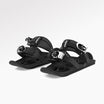
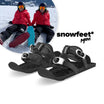

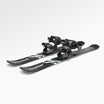



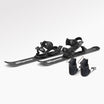






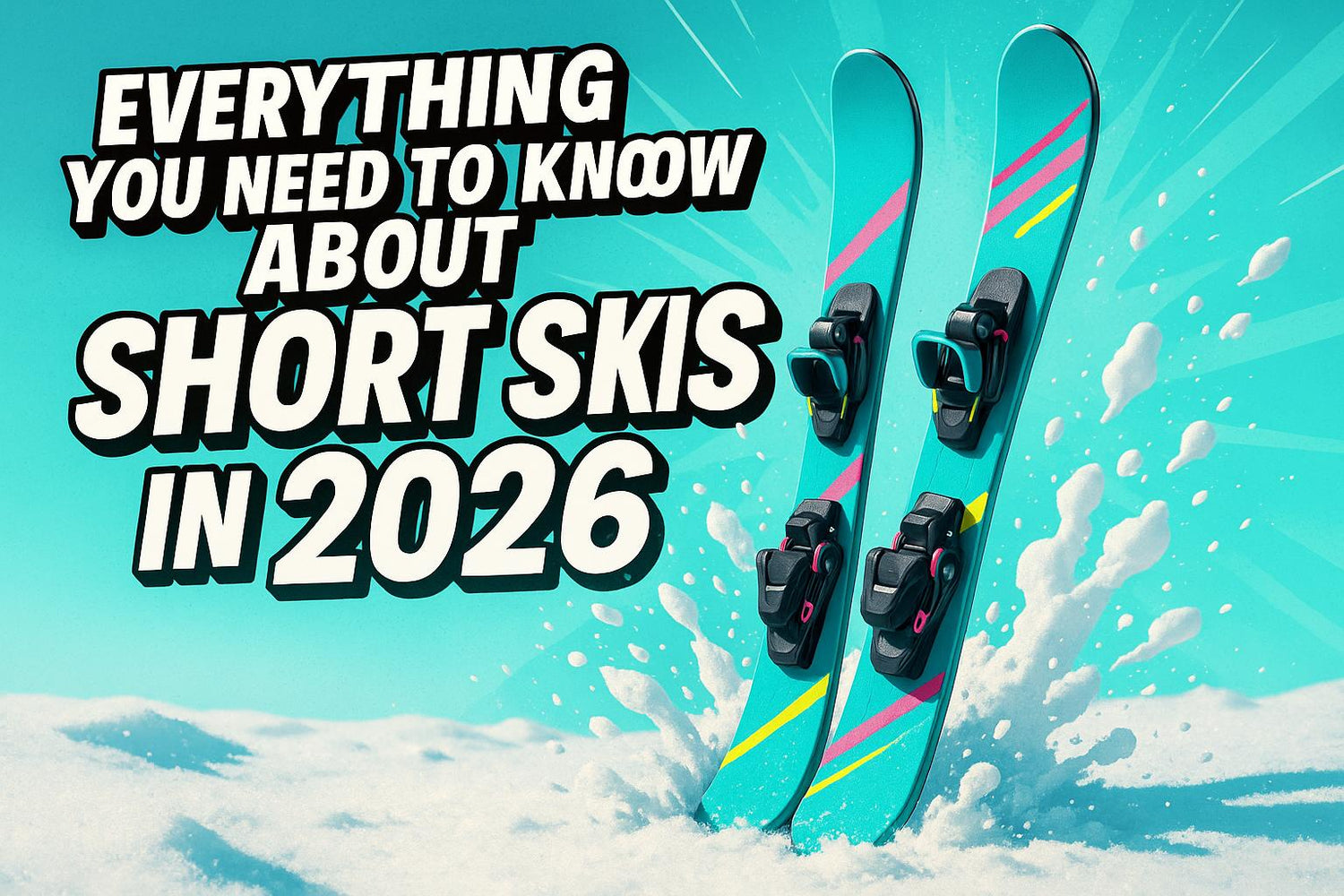





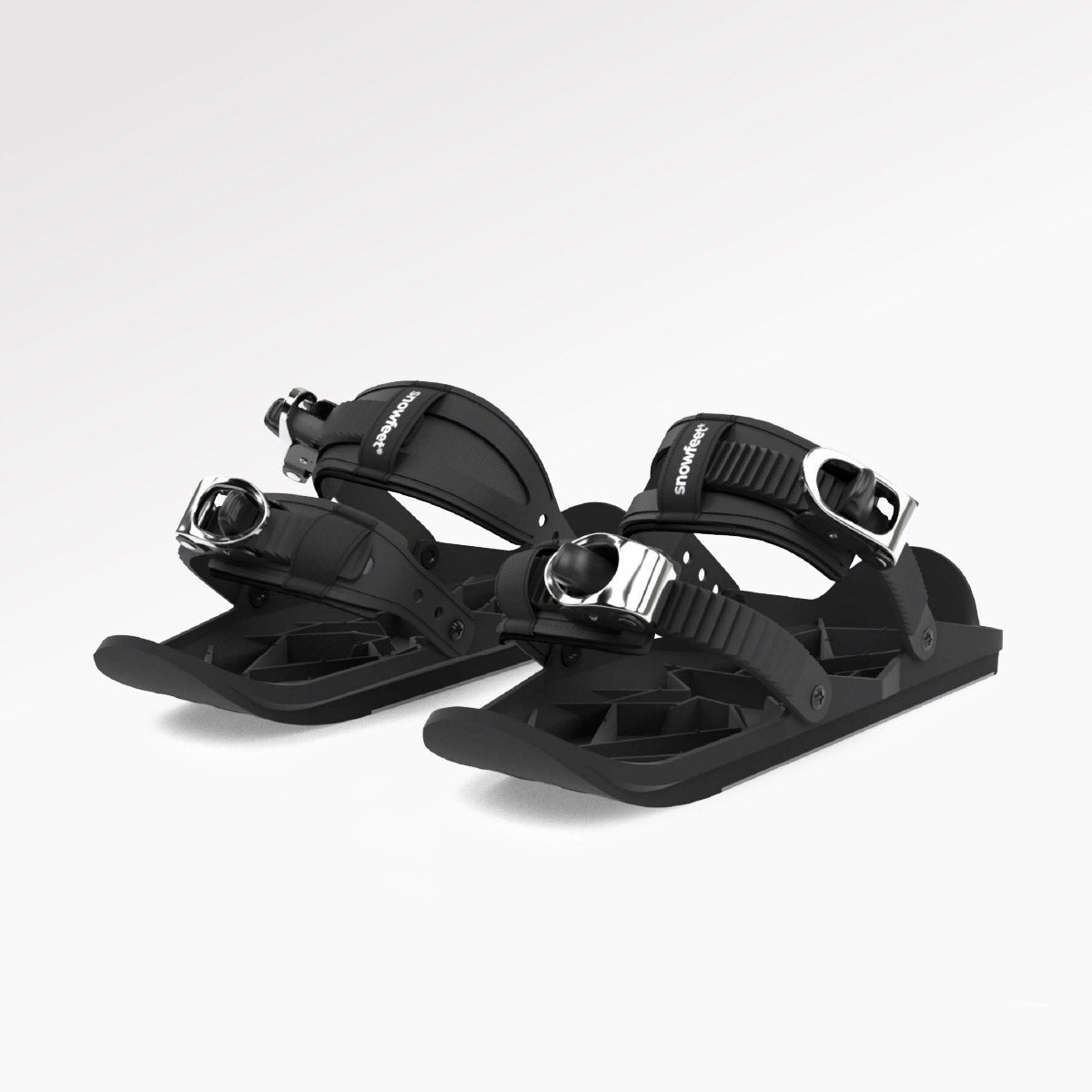
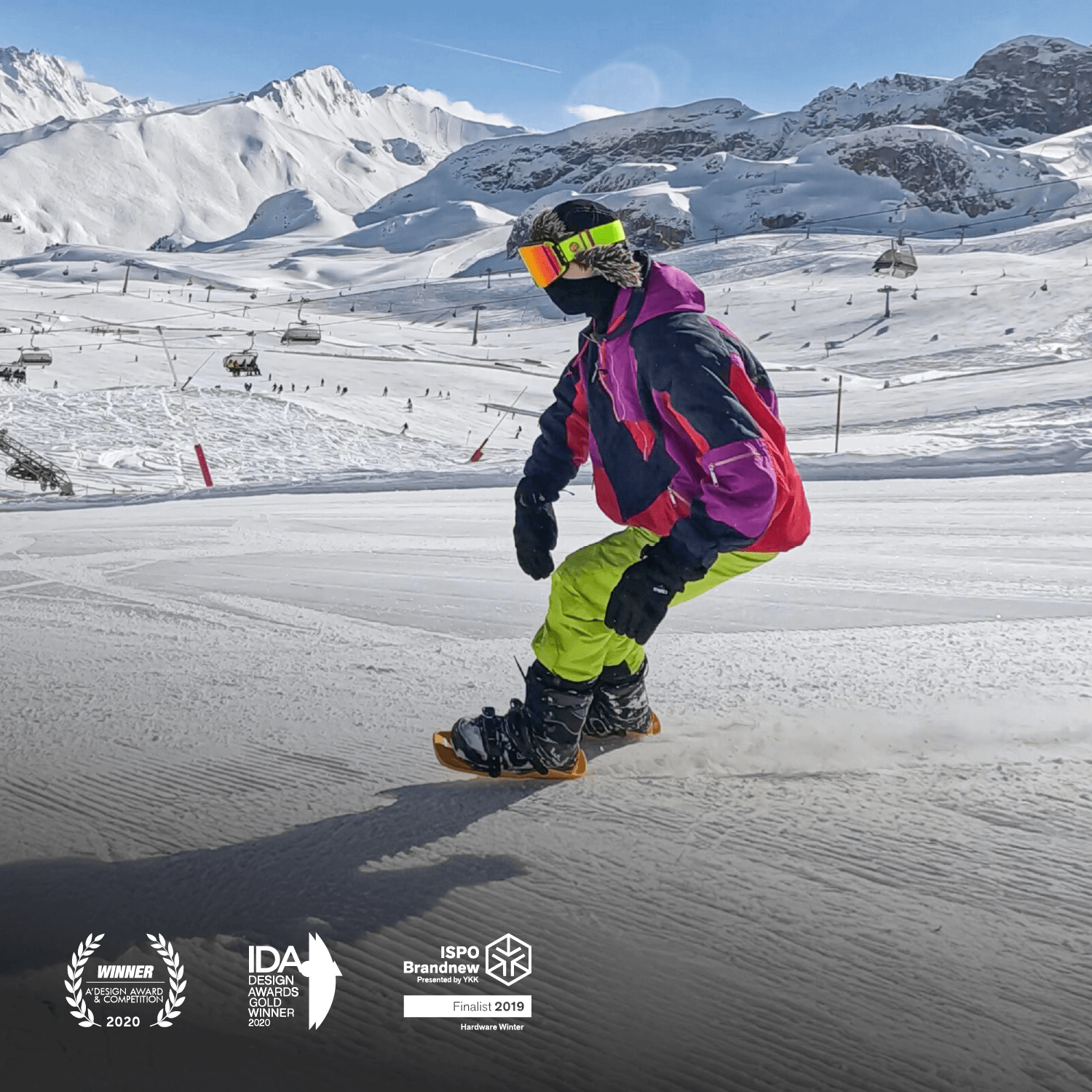


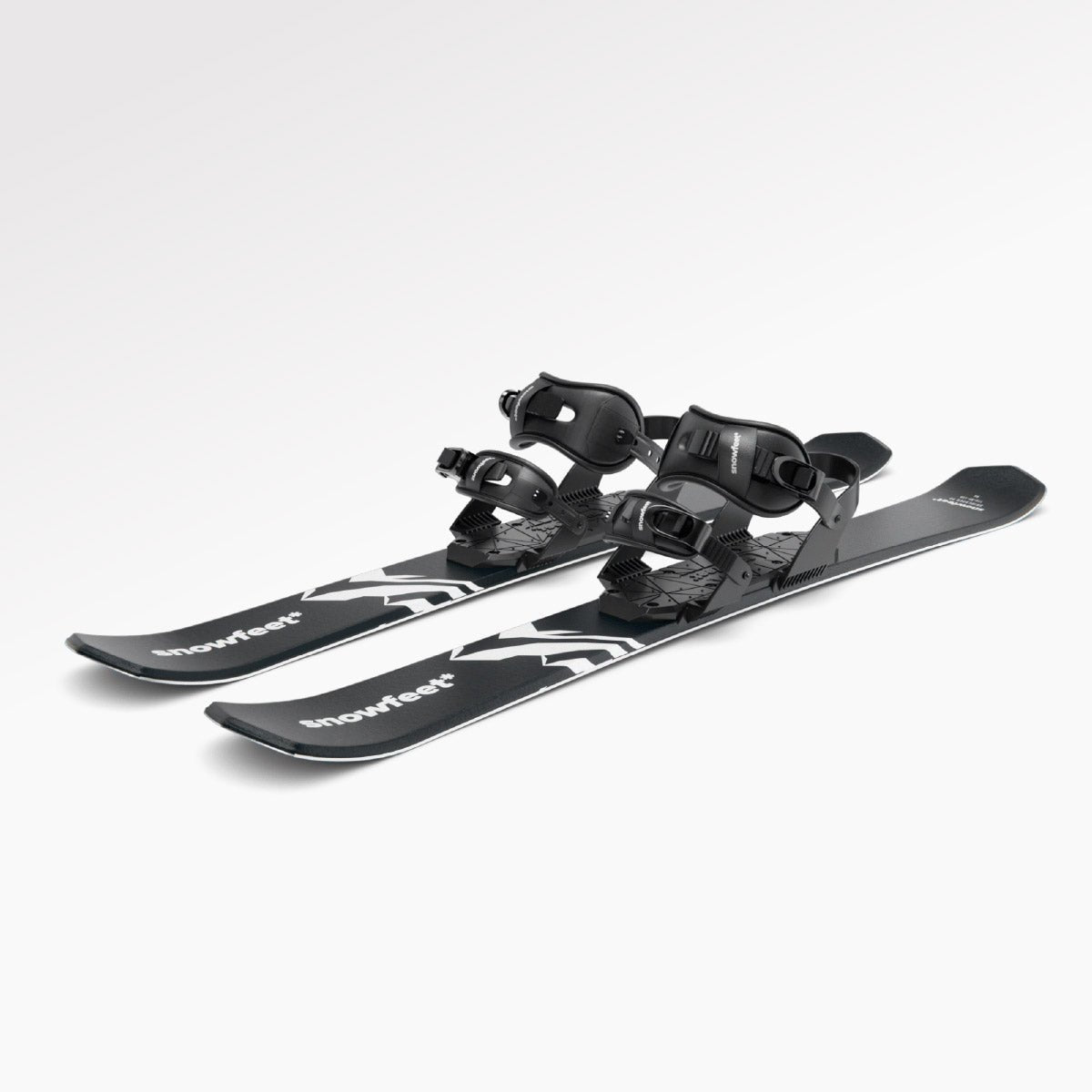

Jätä kommentti
Tämä sivu on suojattu hCaptcha-tunnistuksella, ja hCaptchan tietosuojakäytäntöjä ja käyttöehtoja sovelletaan.